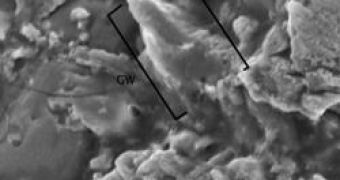We have yet to find direct evidence of dark energy existence, fact which is kind of annoying for most cosmologist. But do we really need it to explain the absence of more than a quarter of the matter in the universe? Well apparently not, according to a study published by the Carnegie Institution of Washington. Carbon whiskers could be just as effective in hiding a large portion of the visible universe as the dark energy.
The evidence has been found in an ancient meteorite which seems to present graphite whiskers, nanostructures embedded into calcium-aluminum-rich inclusions, or CAI for short, which may contain material as old as the solar system we currently inhabit, 4.5 billion years. Previously, astronomers predicted that such structures may form in the heat of a supernova explosion or around young hot stars, however although carbon whiskers were created in controlled conditions on Earth, they have eluded detection in space until now.
Mark Fries, one of the leader of the study, writes that the graphite whiskers were discovered on a meteorite while conducting an experiment related to the exploration of dark patches through a technique commonly known as Raman spectroscopy, which basically involves the heating of the material with the help of a laser system, heat which will determine it to emit infrared radiation. As you probably already know, each chemical element and substance emits a particular infrared spectral frequency when heated, which can be used to study the composition.
Although the CAI mineral fragments formed in the early days of the solar system, being possibly the first solid structures in the system, the graphite whiskers were probably created around the same period of time. Not much is known about the conditions around that time, or the temperatures required for the formation of such structures, however we may be able to extract some information from the sample, as Fries considers. Once we have the capability of detecting graphite whiskers around other stars in distant solar system, only then we may be able to truly have the possibility of creating an image of our own solar system, for the period when these structures have formed.
Additionally, carbon whiskers could have been scattered all over the interstellar space, which may explain the necessity for the introduction of the dark energy notion, as carbon whiskers have the ability of diminishing the light emitted in the infrared spectrum during supernova explosions. However, the possibility of replacing the dark energy concept with carbon nanostructures seems rather remote, considering it would take a massive amount of matter to block out more than 25 percent of the light emitted in the visible universe.
Its a forced theory, but indeed a possible explanation!

 14 DAY TRIAL //
14 DAY TRIAL //